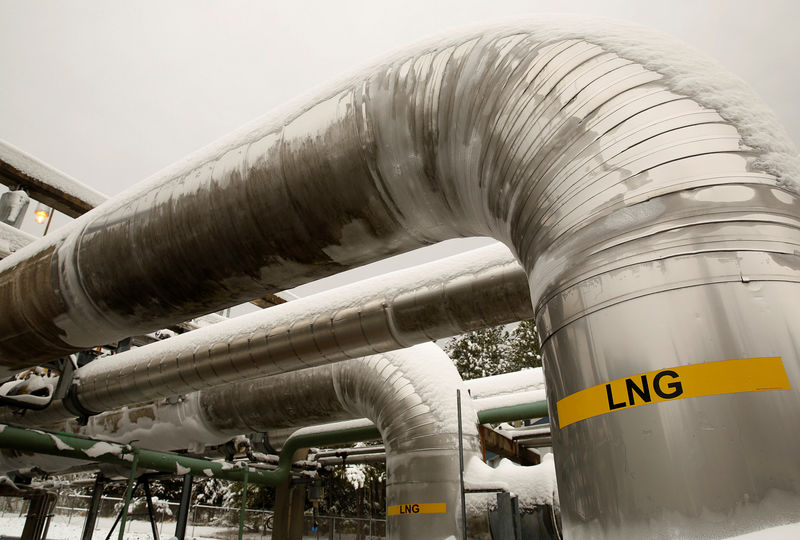By Jan Lopatka and Marek Strzelecki
PRAGUE/WARSAW (Reuters) – European gas traders have begun storing in Ukraine to take advantage of lower prices and available capacity there, regardless of the risks from the ongoing war, three traders and company officials said.
Following Russia’s invasion of Ukraine, begun in February last year, the European Union (EU) has sought high levels of gas storage to compensate for reduced Russian supply, especially during the peak demand winter months.
The bloc is expected to reach a target of filling its storage facilities to 90% full by Nov. 1.
Traders said there was commercial logic in storage in Ukraine, in addition to on EU soil, to take advantage of cheaper prices now versus for future delivery.
Gas for September delivery is priced at 30 euros ($32.96) per MWh compared with forward prices for first quarter of 2004 at 49 euros, according to prices from the TTF Dutch gas futures market.
Czech EPH group told Reuters its decision to use Ukrainian storage was also a sign of confidence in the country.
“EP Commodities transports natural gas to Ukraine and uses Ukrainian gas storage facilities,” Miroslav Hasko, chairman at EPH’s EP Commodities, said.
“We believe in the reliability of the Ukraine’s gas transport and storage systems, which proved themselves even in such an immensely difficult wartime situation.”
He did not disclose volumes.
EU countries’ gas storage facilities were 87% full on Aug. 7, according to transparency platform GIE.
“We see a positive trend in gas injection by foreign traders into our (storage) facilities,” said Ukriane’s state-owned Ukrtransgas, part of Naftogaz Group.
Naftotgaz said foreign customers could use more than 10 billion cubic metres (bcm) of storage of the country’s around 30 bcm capacity, mostly in the country’s west, which is far from the front lines.
Slovakia state-owned SPP, which supplies most of the Slovak market, in part with Russian gas, said it was looking at the possibility of using Ukrainian storage given Slovak storage was already 90% full.
“We consider gas storage in Ukraine as one of the interesting business opportunities that we are currently considering,” SPP told Reuters.
Other European traders said there are risks due to possible military strikes or questions over what happens to the network if Russia stops pumping the gas it still sends westward via Ukraine.
“Imagine a well-targeted missile hits a compressor station or some other infrastructure. You have to take that risk,” said Martin Pich, head of trading at Czech firm MND.
He said volumes at current spreads may not be large but could pick up if spot prices drop. He did not comment on MND’s trading.
The Bruegel think tank said last month Ukraine could increase Europe’s storage capacity by about 10%.
“Utilising the extra 100 TWh capacity available in Ukraine will provide a nice boost to Europe’s winter outlook, and a welcome boost to Ukraine’s income,” Bruegel said.
Gas for storage in Ukraine can be purchased anywhere and pumped using real or virtual flows in pipelines from Hungary, Poland and Slovakia.
Nominations have risen for the pipeline that transports Russian gas from Ukraine to Slovakia at the Velke Kapusany border for flows into Ukraine – virtual reverse flows. They have been up to 10 mcm per day since July.
Physical flows from Slovakia into Ukraine also started in August through the Budince point with daily volumes of around 17 mcm.
($1 = 0.9103 euros)
Read the full article here










